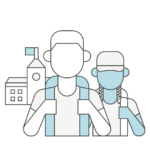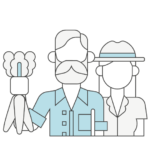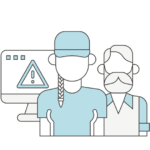Pilot Projects
The pilot projects are an integral part of the co-creation process envisaged in INDIMO. They represent living laboratories where key actors (developers, service operators, policy makers, citizens) are involved in the co-creation of new or upgraded, inclusive and accessible digital mobility and logistics solutions from the very beginning of the design process.
The five pilot projects are situated in cities or regions differing in size, spatial layout, and available transport services. Each pilot brings its own specific set of socio-cultural characteristics, and therefore different needs of its inhabitants.
Special attention has been paid to the different characteristics of users who experience barriers to access digital and physical mobility services, realising that every person has a specific capabilities-limitations spectrum.
The presence of each specific vulnerable-users’ carachteristic in at least two pilots enabled comparison, allowing the identification of needs of end-users and potential solutions in different socio-cultural contexts. A Community of practice has been established in each pilot.
The wheel of users
Different end users have been involved in each pilot project

Pilots implementation strategy
High level guidelines to design, prepare and implement pilots
Assessment of user needs and requirements towards digital mobility solution, by investigating general population as well as specific vulnerable-to-exclusion groups
Redesign of existing services or set up of new services based on the assessment carried out in the phase 1 and the use of the first version of the INDIMO Digital Mobility Toolbox in co-creation workshops
Implementation of (re)designed services, testing and transferability assessment
Pilot projects
Pilot projects refer to five cities and regions characterized by different sizes, spatial and environmental layouts, mobility services and socio-cultural features and needs of their inhabitants.
The establishment of a Community of practice in each pilot brings together local stakeholders (operators, policy makers, developers) and citizens, involving them in all phases of the service design.
- Emilia-RomagnaRead More
Introducing digital technology to enable e-commerce in rural areas (smart boxes)
- AntwerpRead More
Inclusive smart traffic light
- GalileeRead More
Informal ridesharing in ethnic towns
- MadridRead More
Cycle logistics platform for deliveries
- BerlinRead More
On-demand ridesharing integrated into multimodal route planning














